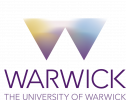© Pint of Science, 2025. All rights reserved.
The universe is huge, yet it's all made up of unimaginably small molecules. So how did we get there? What's it all made of? How can computer science and simulations help us map out the answers to complicated problems? These are just some of the questions we'll be pondering over a pint if you join us for this physics, chemistry and maths mash-up!
A song of atoms and ice
Dr Gabriele Sosso
(Department of Chemistry, University of Warwick)
Did you know, it’s really hard to freeze pure water? Most of the ice on earth forms thanks to impurities in the water (e.g. a bit of mineral dust or some pollen). To find out how exactly these impurities facilitate the freezing of water into ice, we need some snazzy computer simulations. In this talk Gabriele will guide you through the colourful realm of molecular simulations he uses to map these patterns. His work is key to furthering atmospheric science (think climate change!) as well as potential biomedical applications. And it all starts with a laptop and a bit of maths...
Atoms to galaxies: How to get there and why?
Jess Marshall
(Department of Physics, University of Warwick)
Join Jess for a talk of two halves. First: how we got from atoms to galaxies in a surprisingly short amount of time. Of course, there will be examples about cosmic time and what counts as a short and a long time with respect to periods of time people are more used to. Second: how we will use atoms to travel to galaxies and why? Why we need to be not just a multi-planet species but a multi-system species so that we as a humans have the best chance of survival. But how will we do it? How will we get there and how do we keep the lights on?
The shape of data
Dr Nicholas Jackson
(Warwick Mathematics Institute, University of Warwick)
Data science is becoming ever more important in the modern world. Sophisticated analytical techniques are used to find structure, patterns and correlations in increasingly large collections of data in fields as diverse as marketing and medicine. The last several years has seen the emergence of a new field: topological data analysis, which uses techniques from a rather abstract branch of mathematics, called algebraic topology, to find new and interesting structures in large, multi-dimensional data sets. Nicholas will give a quick overview of what this is, how it works, and what it's been used f
Mass spectrometry for beginners
Professor Peter O'Connor
(Department of Chemistry, University of Warwick)
Mass Spectrometers are a great piece of kit. They allow scientists to look at a substance and understand on a molecular level what’s in it. That’s really useful for everyone from chemists to clinicians. For example a doctor might need to measure the concentration of a certain molecule in blood or urine to diagnose a patient. Peter will present some of the interesting measurements you can do with mass spectrometers, and why we’d be interested in doing them.
Map data © OpenStreetMap contributors.


